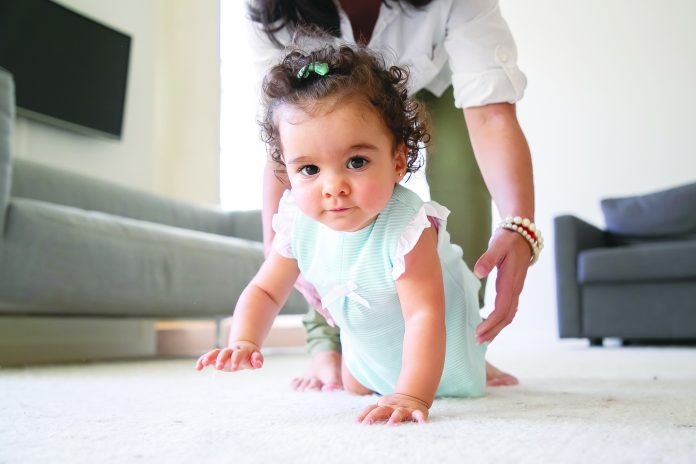by Rima Madi ECE
When babies are born, most of their movements are natural reflexes—they don’t have to learn them, they just happen automatically when they feel or see something. Some examples of reflexes are: Palmar, stepping, and tonic neck. Reflexes are important in human infancy because they provide information about the integrity of the brain and the nervous system. In addition to reflexes, the newborn will come equipped with congenitally organized behaviours such as looking, sucking, and crying. These behaviours illustrate that babies come equipped with tools for acting on their world as well as for reacting to it (Vista et al., 1995).
Motor development is a critical aspect of human infancy, serving as a toolkit that empowers babies to navigate their environment, embark on exciting adventures, and most importantly to manifest their agencies. (Vasta et al.1995). Motor development encompasses two main categories: locomotion (gross motor) and prehension (fine motor). Locomotion involves movement through space, such as walking and crawling, while prehension refers to the ability to grasp and manipulate objects using the hands (Vasta et al.1995).
The progression of motor skills follows two general principles. The first is proximodistal development, where body parts closest to the center of the body gain control before those farther out. The second principle, cephalocaudal development, describes the progression from head to foot in maturing body parts. As infants grow, mastering locomotor skills requires increasing timing, balance, and coordination (Vasta et al.1995).
Babies achieve locomotor milestones at varying ages and through different methods. While genetic factors set the stage for various achievements, these milestones are actualized through interactions with the real world of events and objects. Motor development isn’t something that happens to babies; rather, it is largely driven by their desire to interact with the world (Vasta et al.1995).
Top of Form
Vasta et al (1995) stated that: “Whereas extra training may not accelerate children’s motor development, some amount of experience appears necessary for development to occur normally. Infants deprived of physical stimulation or the opportunity to move about were found to have delayed motor development” (p.187).
In summary, each infant achieves developmental milestones at their own unique pace and timing. Movement develops through both nature (the child’s biology) and nurture (experience). Guardians and caregivers should reduce the amount of passive time infants spend restrained in commercial baby “containers” during waking hours. To support infants’ natural abilities, it is essential to create a supportive, inclusive, and responsive physical environment that encourages free movement. Placing infants on a firm surface on their backs and allowing them to move freely helps strengthen the neck and chest muscles. The Pikler approach emphasizes that this fosters the natural development of muscle systems. When ready, babies will naturally begin to roll onto their sides and eventually turn over onto their stomachs by themselves, enabling them to participate in their own tummy time. It is also essential to trust infants to create their own meaningful activities, embrace their self-chosen struggles, and take reasonable physical and social risks (Gonzalez-Mena and Eyer, 2011).
References
• Gonzalez-Mena, J. and Eyer, D. W. (2021). Infants, toddlers, and caregivers: A curriculum of respectful, responsive, relationship-based care and educations (12th ed.). McGraw-Hill.
• Vasta, R. and Haith, M; M. Miller, A; S. (1995). Child psychology. (2nd edition). New York.










